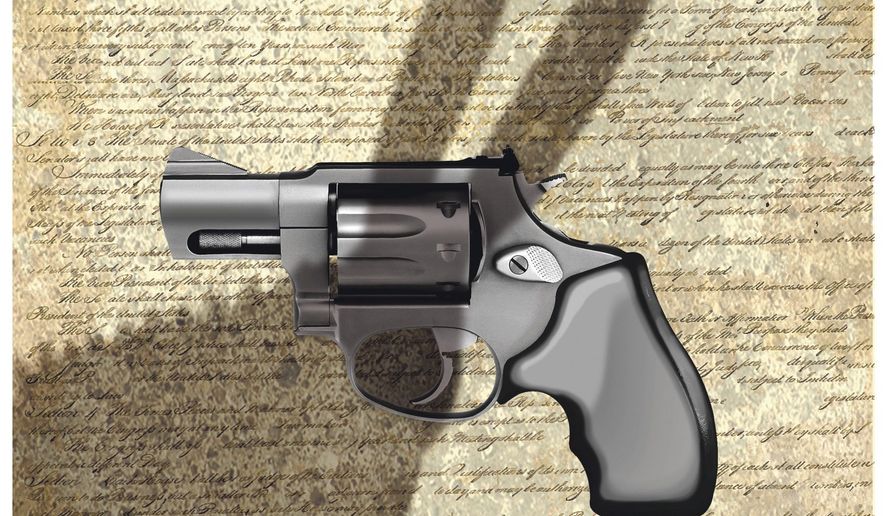OPINION:
Rep. Nancy Pelosi, California Democrat, likely to again be the House majority leader, has said she will push new gun-control laws as soon as the Democrats get the gavel back in January. So how will a Democrat-controlled House affect your Second Amendment-protected freedom?
Republicans do still hold the Senate by a slim margin and President Donald J. Trump could veto legislation, so gun-control bills passed by the House aren’t likely to become law. Instead, they are more likely to be passed to create political talking points in 2020.
“Expect hearings on taxpayer-funded gun violence research, magazine restrictions, ammunition bans, age-based gun bans and attempts to outright ban entire classes of firearms,” says Larry Keane, senior vice president and general counsel for the National Shooting Sports Foundation (NSSF), the trade association for firearms manufacturers (full disclosure: I’ve done some contract work for the NSSF).
“Virginia Democratic Congresswoman-elect Jennifer Wexton defeated Rep. Barbara Comstock on a platform that included banning AR-15 modern sporting rifles and standard capacity magazines. She’s just one of several newly elected members of Congress who will be looking to make good on their campaign promises,” says Mr. Keane.
As much of the public doesn’t understand the nuances of these issues (the mainstream media has purposely not helped with this), here’s a list of what a Democrat-led House will likely take up on the gun issue and how those who respect freedom should articulate their responses.
1. Limits on magazine capacity
Bans on gun magazines over a certain size have been passed in a few states. To someone who doesn’t own a firearm, these can sound like commonsense. Anyone who shoots, however, knows such legislation isn’t practical or effective; it also likely isn’t even constitutional, as so-called “high-capacity magazines” are in common use. Also, dropping and loading a new magazine can be done in a blur with little training. Even shotguns can be loaded fast with a little practice. You can see actor Keanu Reeves do this with multiple firearm platforms (shotgun, pistol and rifle) on YouTube as he trained for the “John Wick” films.
2. Bans on “assault weapons”
Research shows that the 1994 “Federal Assault Weapons Ban” didn’t have any impact on the murder rate during the 10 years it was in effect. This isn’t surprising for a lot of reasons starting with the fact that the FBI’s “uniform crime reports” consistently show that rifles of all types are used in less than 3 percent of murders. The semiautomatic firearm design is also the most popular gun type sold today; in fact, the AR-15 was hardly the first semiautomatic rifle popularly sold to the public. In the very early 20th century many American gun makers made a of semiautomatic rifles and pistols for the public. The problem isn’t this gun design.
3. Bans on “bump stocks”
The Bureau of Alcohol, Tobacco, Firearms and Explosives (ATF) is already taking care of this issue. It was the ATF during the Obama administration that approved bump stocks for sale in the first place.
4. “Universal” background check laws
“Universal” is in quotes because criminals by definition won’t submit to background checks, so such a bill would hardly by universal. What this kind of legislation does is make buying firearms more expensive, as gun stores will have to charge to call the background checks into the FBI’s National Instant Criminal Background Check System (NICS). So this would be a particular burden on poorer Americans. Also, as most murders in the United States are committed with illegal handguns (not with guns legally purchased at a gun store or from a private person, but with stolen handguns sold on a black market), such legislation is unlikely to reduce the murder rate.
5. Increases in age limits
Do we really want to live in a country that recruits and trains 18 year olds to fight for us, but that doesn’t allow these same legal adults to buy firearms here in the land of the free?
6. Mandates for “smart guns”
A mandate for “smart guns” is an unconstitutional gun ban of everything now available in a very diverse marketplace. Such a mandate would attempt to force people to buy unproven, experimental firearms and to put a battery between themselves and murderers, rapists, and so on. Just the threat of mandates has already all but ended the development of this technology.
7. Funds for “gun violence” research
There is no federal ban for funding research into gun violence. There is a ban on using federal funds for advocacy on this issue. The “Dickey Amendment” was first inserted as a rider into the 1996 federal government omnibus spending bill that mandated that “none of the funds made available for injury prevention and control at the Centers for Disease Control and Prevention (CDC) may be used to advocate or promote gun control.”
• Frank Miniter is the author of “Spies in Congress: Inside the Democrats’ Covered-Up Cyber Scandal” (Post Hill Press, 2018).




Please read our comment policy before commenting.